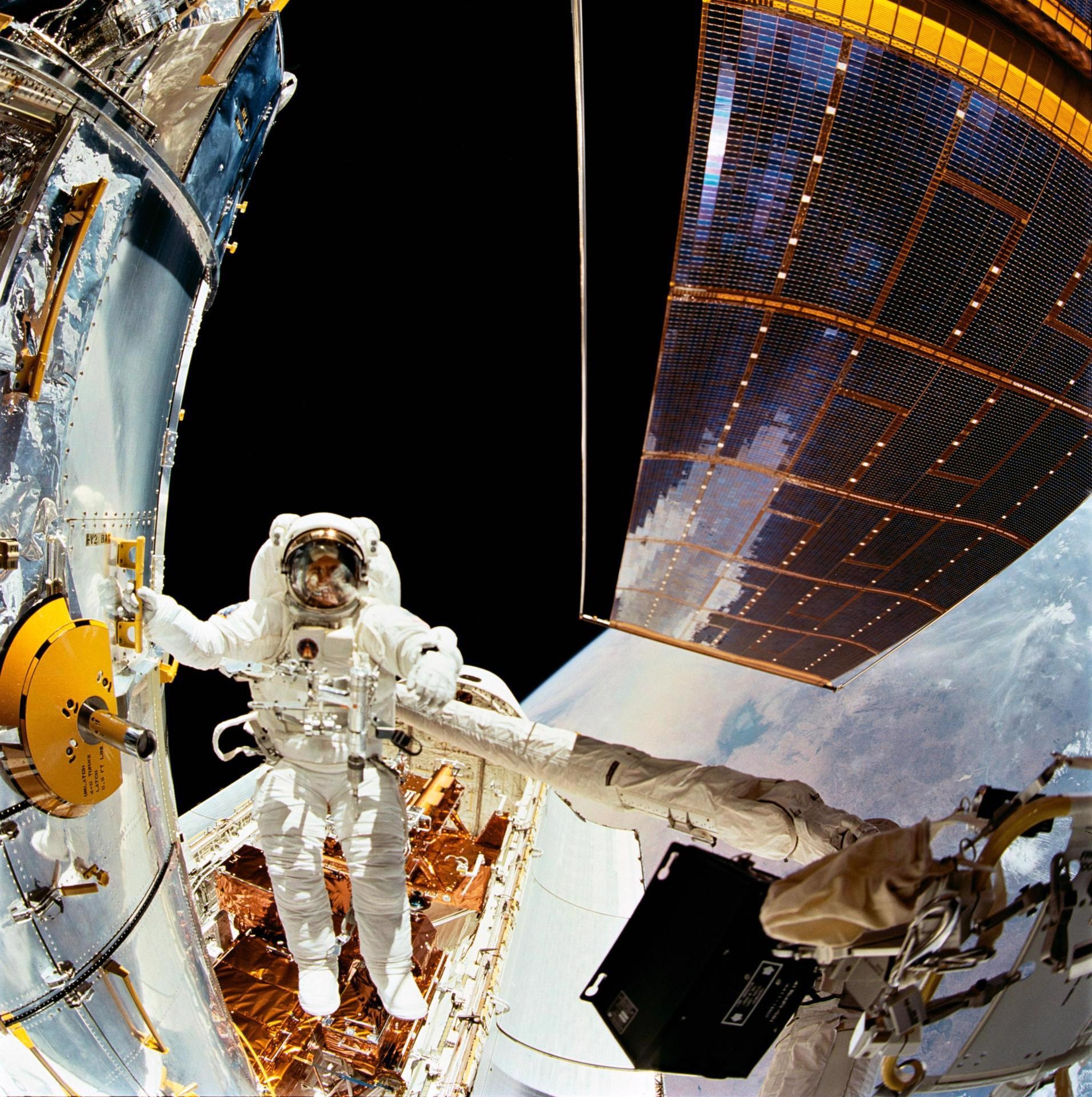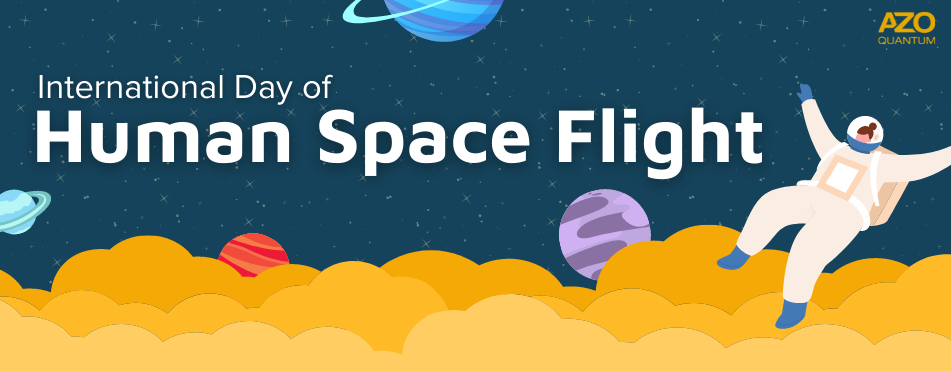

This International Day of Human Space Flight, humanity looks toward the stars. It has been 61 years since cosmonaut Yuri Gagarin made the first human spaceflight, kicking off the space race and an age of unprecedented discovery.
The last time humans set foot on the moon was NASA’s Apollo 17 mission in 1972, and since then, we have not ventured outside low Earth orbit. But a new age of discovery is coming, and once again humans are on the brink of setting foot on our celestial neighbors.
The New Space Race
Currently, there are only a few humans in space aboard the International Space Station. This station, the largest ever assembled and launched into low Earth orbit, has been a prime example of international cooperation. The US, Russia, Canada, Brazil, Japan, and the eleven nations that make up the European Space Agency (France, the UK, Germany, Belgium, Denmark, Italy, the Netherlands, Spain, Norway, Switzerland, and Sweden) have all contributed to the ISS.
Human spaceflight has historically been the preserve of governments and government agencies such as NASA, the ESA, ROSCOSMOS, and China’s National Space Administration. With the dawn of the new century, however, private commercial enterprises have stepped up and played more of a defining role in the new space race and the quest for putting humans on our nearest celestial neighbors.
As Elon Musk, founder of SpaceX has stated, humankind must become a multi-planetary species. This is perhaps all the more urgent given the existential threats to our existence on this planet such as climate change, asteroid impacts, and the threat of nuclear conflict.
Getting Us There
The first step for human space exploration to the moon and beyond is developing the technology to launch astronauts and vital payloads into orbit. Over the past sixty or so years since Yuri Gagarin was the first human to break free of Earth’s confines, heavy-lift rockets, capsules, landers, and reusable vehicles such as the famous Space Shuttle have been developed and used by multiple nations.
In the past few decades, organizations such as NASA, which put the first human on the moon in 1969, have turned to private enterprises to develop and provide next-generation vehicles capable of meeting the demands of the new space race. SpaceX, for instance, has developed the Dragon capsules which have been used successfully to deliver crew and cargo to the International Space Station. Their Starship project is developing a fully reusable heavy-lift rocket to carry astronauts, vehicles, and equipment to the Moon, Mars, and beyond.

Astronaut F. Story Musgrave, holding to one of many strategically placed handrails on the Hubble Space Telescope (HST), is photographed during the first of five extravehicular activities (EVA) on the HST-servicing mission, aboard the Space Shuttle Endeavour. Image Credit: NASA
Axiom-1
In April 2022, SpaceX launched the first private crewed mission, Axiom-1, starting a new chapter in spaceflight. The crew has docked with the International Space Station, where they will conduct a ten-day mission alongside an international team of astronauts.
The Falcon 9 rocket used to launch the crew into orbit performed a perfect touchdown, further demonstrating SpaceX’s capabilities in reusable space flight equipment, the first reusable equipment since the mothballing of the Space Shuttle program. The mission is the first stepping stone to the launch of commercial modules in 2024, which will be attached to the International Space Station and eventually pave the way for a fully privately funded and operated space lab.
Polaris Dawn
SpaceX is currently planning to launch Polaris Dawn no earlier than the fourth quarter of 2022. During the mission, the crew will spend up to five days in orbit, working towards several objectives. These include the first commercial spacewalk, research health impact for future space missions, and will be the first crew to use the company’s Starlink laser-based communications in space to gather data and provide insights into the future of space communications.
Whilst there are several missions to put astronauts and commercial passengers into low Earth orbit, the prize remains returning to the moon and launching astronauts to Mars and beyond. NASA’s Artemis mission represents our first tentative steps back to our closest neighbors and kickstarts a new, exciting age of discovery.
The Artemis missions will land the first woman and first person of color on the lunar surface and collaborate with NASA’s commercial and international partners. With the success of the first missions, a long-term base of operations will be established on our closest neighbor and innovative technologies will be used to explore more of the lunar surface than was previously possible. The knowledge that this mission will give space agencies will be used to take the next leap in human space exploration: sending astronauts to Mars.
Artemis I: NASA’s Plans to Travel Beyond the Moon
Video Credit: NASA/Youtube.com
The construction of a lunar base camp and the mission’s lunar orbit Gateway will allow astronauts and robots to explore more and conduct scientific research in ways previously not possible. NASA’s reusable Orion spacecraft will be used to ferry crew and equipment and will be launched by NASA’s Space Launch System rocket. Gateway will remain in lunar orbit for more than a decade and will support long-term exploration and research both on the surface of the moon and in orbit.
The Artemis mission will be one of discovery, scientific and technological innovation, economic opportunity, and perhaps most importantly, inspiration for a new generation, much like the Apollo 11 mission inspired humankind with its first images of an alien world and a sense of what humanity can overcome and achieve.
If you want to send your name on a flash drive that will fly aboard Artemis I, you can generate your 'boarding pass' here.
The Dawn of a New Age of Space Exploration
The dawn of a new age of human space exploration is upon us. With the best and brightest of humanity working together to send humans back to the moon and to Mars and beyond, and many missions planned over the coming decade, this is an inspiring tale of international cooperation and technological innovation. Whilst many challenges lie ahead, the possibilities are endless.
More from AZoQuantum: What Research has the Cargo Dragon CRS24 Mission Supported?
Further Reading and Information
NASA (2022) Artemis [online] nasa.gov. Available at: https://www.nasa.gov/specials/artemis/
Harwood, W (2022) SpaceX launces first all-commercial crew to space station [online] cbsnews.com. Available at: https://www.cbsnews.com/news/spacex-launch-space-station-how-to-watch-time-channel-stream-2022-04-08/
Polaris Dawn [online] polarisprogram.com. Available at: https://polarisprogram.com/dawn/
Disclaimer: The views expressed here are those of the author expressed in their private capacity and do not necessarily represent the views of AZoM.com Limited T/A AZoNetwork the owner and operator of this website. This disclaimer forms part of the Terms and conditions of use of this website.